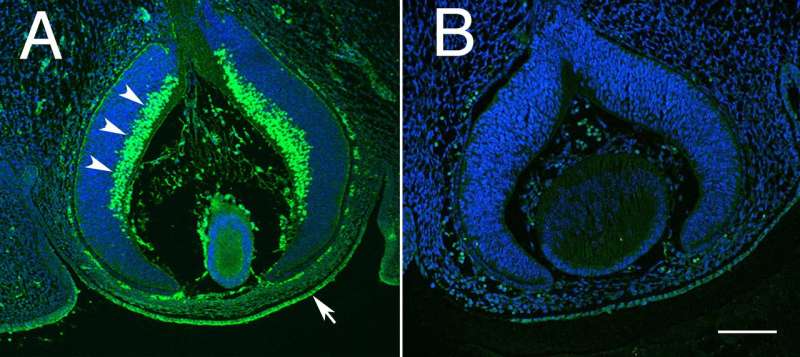Study finds genetic link between thinner corneas and increased risk of glaucoma

Genetic studies in mice point to a protein called POU6F2, which can modulate corneal thickness, as a possible risk factor for glaucoma in humans, report Eldon Geisert of Emory University, and colleagues, January 25th in PLOS Genetics.
Glaucoma comprises a group of eye diseases that cause pressure to build up in the eye, which damages the optic nerve and ultimately leads to blindness. Multiple risk factors and underlying mutations contribute to glaucoma, but the best-known risk factor is having a thin cornea. Geisert and colleagues investigated genes that affect corneal thickness using strains of specially bred mice. They then compared genetic variants that lead to thin corneas in mice, to genes that increase a person's risk of a common type of glaucoma, called primary open angle glaucoma. The researchers identified a transcription factor called POU6F2, which is found in developing nerve cells in the retina and corneal cells in mice.
When they removed the gene that codes for POU6F2, the affected mice had thinner corneas than normal mice. Additionally, POU6F2 appears to help regulate the developing cornea and may also be responsible, in part, for the keeping the cornea healthy by regulating corneal stem cells in adult mice.
Overall, the new study suggests that genetic variations in the gene that codes for POU6F2 may affect the structure of the eye and increase a person's risk of glaucoma, but additional studies will be needed to describe the exact mechanism. Finding a genetic link between glaucoma and thin corneas has been difficult because while both traits run in families, a complicated mix of multiple genes and environmental conditions contribute to these complex traits. The role of POU6F2 in corneal development and thickness in mice, however, points to the gene as a possible risk factor for glaucoma in humans that deserves further investigation.
Eldon E. Geisert adds: "Glaucoma is a complex disease with many genetic and environmental factor influencing the patient population. Previous work by collaborators at Harvard and Duke identified many of these genetic factors; however, we currently only can account for approximately 7% of the genetic risk for glaucoma. We chose to use a well-defined mouse system to define genetic elements that can be directly related to human disease. It is our hope that defining this link between central corneal thickness and glaucoma will aid in early detection of glaucoma and eventually treatments to halt the progression of this disease."
More information: King R, Struebing FL, Li Y, Wang J, Koch AA, Cooke Bailey JN, et al. (2018) Genomic locus modulating corneal thickness in the mouse identifies POU6F2 as a potential risk of developing glaucoma. PLoS Genet 14(1): e1007145. doi.org/10.1371/journal.pgen.1007145


















